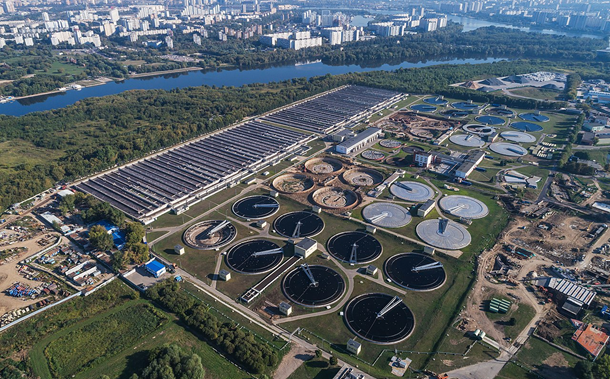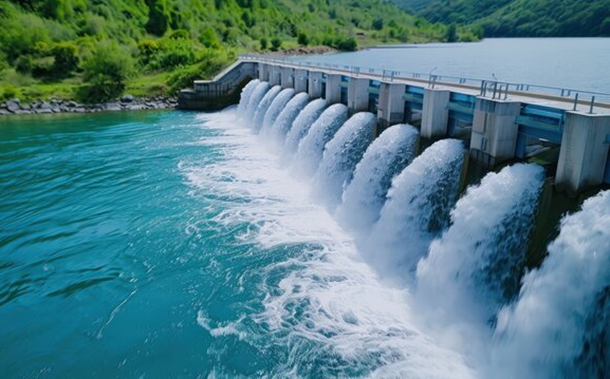Fuzzy Bayesian Belief Networks Method on Risk Assessment of EPC Pipeline Project
Downloads
Doi:10.28991/CEJ-2025-011-03-013
Full Text:PDF
Downloads
[2] IESR. (2021). Indonesia Energy Transition Outlook 2021: Tracking Progress of Energy. Institute for Essential Services Reform (IESR), Jakarta, Indonesia.
[3] Asian Development Bank. (2018). Strategy 2030: Achieving a Prosperous, Inclusive, Resilient, and Sustainable Asia and the Pacific. Asian Development Bank (Issue July), Metro Manila, Philippines. doi:10.22617/TCS189401-2.
[4] Jatto, A. L. A. (2024). Oil and Gas Pipeline Infrastructure and Sustainable Development in the Global South. In: Oil and Gas Pipeline Infrastructure Insecurity. New Security Challenges. Palgrave Macmillan, Cham, Switzerland. doi:10.1007/978-3-031-56932-6_2.
[5] McCollum, D. L., Echeverri, L. G., Busch, S., Pachauri, S., Parkinson, S., Rogelj, J., Krey, V., Minx, J. C., Nilsson, M., Stevance, A. S., & Riahi, K. (2018). Connecting the sustainable development goals by their energy inter-linkages. Environmental Research Letters, 13(3), 33006. doi:10.1088/1748-9326/aaafe3.
[6] Molnar, G. (2022). Economics of Gas Transportation by Pipeline and LNG. The Palgrave Handbook of International Energy Economics, 23–57. doi:10.1007/978-3-030-86884-0_2.
[7] Mukharror, D. A., Maulana, I., Yusuf, M., Devianto, H., Sommeng, A. N., Kartohardjono, S., & Hermansyah, H. (2024). Collection and analysis of hydrocarbon gas buried onshore pipeline accidents in Indonesia as the databases for failure frequency assessment in a quantitative risk analysis. Process Safety Progress, 43(S1), S128–S133. doi:10.1002/prs.12577.
[8] Ritz, R. A. (2019). A strategic perspective on competition between pipeline gas and LNG. Energy Journal, 40(5), 195–220. doi:10.5547/01956574.40.5.rrit.
[9] Kraidi, L., Shah, R., Matipa, W., Borthwick, F., & Hashim, K. (2019). Development of Risk Optimisation Model for Oil and Gas Transportation Pipeline Routes. IOP Conference Series: Materials Science and Engineering, 584(1), 12025. doi:10.1088/1757-899X/584/1/012025.
[10] Honoré, A., & Stern, J. (2007). The Pricing of Internationally Traded Gas. Oxford University Press, Oxford, United Kingdom.
[11] Roodsari, S. Y., Hasan, S., Shah, S., & Ganji, E. N. (2023). Review of Risk Identification within Engineering, Procurement and Construction (EPC) Projects. 2023 IEEE International Conference on Technology Management, Operations and Decisions (ICTMOD), 1–6. doi:10.1109/ictmod59086.2023.10472905.
[12] Aljohani, A. (2017). Construction Projects Cost Overrun: What Does the Literature Tell Us? International Journal of Innovation, Management and Technology, 137–143. doi:10.18178/ijimt.2017.8.2.717.
[13] Gultom, I. D. (2016). Estimating Cost Contingency Based on Risk Register at EPC Oil & Gas Project. PhD Thesis, Fakultas Teknik Universitas Indonesia, Kota Depok, Indonesia. (In Indonesian).
[14] Mubin, S., & Mannan, A. (2013). Innovative approach to risk analysis and management of oil and gas sector EPC contracts from a contractor's perspective. Journal of Business & Economics, 5(2), 149.
[15] Sihombing, L. B., & Christin, B. (2023). Analyzing Contingency Cost Risks in a Pipeline EPC Project Using a Monte Carlo Simulation. Journal of Pipeline Systems Engineering and Practice, 14(3). doi:10.1061/jpsea2.pseng-1382.
[16] Yusuf, M., & Latief, Y. (2024). Fuzzy, neural network, and expert system hybrid method development framework for cost contingency estimation in subsea gas pipeline construction. AIP Conference Proceedings, 3215(1), 80004. doi:10.1063/5.0235617.
[17] Al-Gahtani, K., Shafaay, M., Ahmed, O., Alawshan, M., Alsanabani, N., & Aljadhai, S. (2023). Risk Factors for Time and Cost Overruns of Pipeline Projects in Saudi Arabia. Advances in Civil Engineering, 2023, 1–11. doi:10.1155/2023/9497451.
[18] Gunarso, G., & Sungkono, K. K. D. (2018). Risk Analysis of Engineering Design Stage in Financing of EPC Project Construction Work (Case Study: Asam-Asam CPP and OLC Project, PT. Krakatau Engineering). Jurnal Teknik Sipil dan Arsitektur, 22(26). (In Indonesian).
[19] Adi, T. J., & Yunwanti, S. (2014). Risk Based Contingency Cost Estimation Modeling for Engineering-Procurement-Construction Project. Prosiding Seminar Nasional Manajemen Teknologi XXI, 19 July, 2014, Surabaya, Indonesia.
[20] Hoseini, E., Bosch-Rekveldt, M., & Hertogh, M. (2020). Cost Contingency and Cost Evolvement of Construction Projects in the Preconstruction Phase. Journal of Construction Engineering and Management, 146(6). doi:10.1061/(asce)co.1943-7862.0001842.
[21] Berawi, M. A., Soepardi, A., & Sayuti, M. S. (2020). Risk Analysis on the Equipment and Material Procurement Process of Engineering, Procurement, and Construction (EPC) Projects. International Journal of Real Estate Studies, 14(1), 78–90. doi:10.11113/intrest.v14n1.137.
[22] Nur Sholeh, M., & Fauziyah, S. (2018). Current state mapping of the supply chain in engineering procurement construction (EPC) project: A case study. MATEC Web of Conferences, 195, 6015. doi:10.1051/matecconf/201819506015.
[23] Kwon, H., & Kang, C. W. (2019). Improving Project Budget Estimation Accuracy and Precision by Analyzing Reserves for Both Identified and Unidentified Risks. Project Management Journal, 50(1), 86–100. doi:10.1177/8756972818810963.
[24] Mahmood, Y., Chen, J., Yodo, N., & Huang, Y. (2024). Optimizing natural gas pipeline risk assessment using hybrid fuzzy bayesian networks and expert elicitation for effective decision-making strategies. Gas Science and Engineering, 125, 205283. doi:10.1016/j.jgsce.2024.205283.
[25] Plebankiewicz, E., & Wieczorek, D. (2020). Prediction of cost overrun risk in construction projects. Sustainability (Switzerland), 12(22), 1–15. doi:10.3390/su12229341.
[26] Rodhi, N. N., Anwar, N., & Artama Wiguna, I. P. (2017). A Review on Risk Factors in the Project of Oil and Gas Industry. IPTEK The Journal for Technology and Science, 28(3). doi:10.12962/j20882033.v28i3.3217.
[27] Zhang, P., Qin, G., & Wang, Y. (2019). Risk assessment system for oil and gas pipelines laid in one ditch based on quantitative risk analysis. Energies, 12(6), 981. doi:10.3390/en12060981.
[28] Liu, F., Yang, J., Wu, S., & Xu, L. (2024). Quantitative risk analysis on failure of submarine pipeline leakage based on FDHHFLTS-BN. China Safety Science Journal, 34(1), 166–170. doi:10.16265/j.cnki.issn1003-3033.2024.01.1247.
[29] Abdelgawad, M., & Fayek, A. R. (2012). Comprehensive Hybrid Framework for Risk Analysis in the Construction Industry Using Combined Failure Mode and Effect Analysis, Fault Trees, Event Trees, and Fuzzy Logic. Journal of Construction Engineering and Management, 138(5), 642–651. doi:10.1061/(asce)co.1943-7862.0000471.
[30] Yuhua, D., & Datao, Y. (2005). Estimation of failure probability of oil and gas transmission pipelines by fuzzy fault tree analysis. Journal of Loss Prevention in the Process Industries, 18(2), 83–88. doi:10.1016/j.jlp.2004.12.003.
[31] Dinmohammadi, F., & Shafiee, M. (2013). A fuzzy-FMEA risk assessment approach for offshore wind turbines. International Journal of Prognostics and Health Management, 4(SPECIAL ISSUE 2), 59-68. doi:10.36001/ijphm.2013.v4i3.2143.
[32] Durrani, O., & Zeeshan, Q. (2023). An Assessment of Risks in Oil and Gas Construction Projects in Pakistan: A Quantitative Approach Using Failure Modes and Effects Analysis. Journal of Engineering Management and Systems Engineering, 2(3), 180–195. doi:10.56578/jemse020305.
[33] Shahriar, A., Sadiq, R., & Tesfamariam, S. (2012). Risk analysis for oil & gas pipelines: A sustainability assessment approach using fuzzy based bow-tie analysis. Journal of Loss Prevention in the Process Industries, 25(3), 505–523. doi:10.1016/j.jlp.2011.12.007.
[34] Shan, X., Liu, K., & Sun, P. L. (2017). Risk Analysis on Leakage Failure of Natural Gas Pipelines by Fuzzy Bayesian Network with a Bow-Tie Model. Scientific Programming, 2017, 1–11. doi:10.1155/2017/3639524.
[35] Jishin Jayan, T., Muthukumar, K., Renjith, V. R., & George, P. (2021). The risk assessment of a crude oil pipeline using fuzzy and Bayesian based bow-tie analysis. Journal of Engineering Research (Kuwait), 9. doi:10.36909/jer.ICMMM.12399.
[36] Brokbals, S., Wapelhorst, V., & ÄŒadeŠ¾, I. (2019). Calculation of risk costs in construction projects: Empirical analysis of construction risks applying the Monte Carlo method. Civil Engineering Design, 1(3–4), 120–128.
[37] Ali Elfarra, M., & Kaya, M. (2021). Estimation of electricity cost of wind energy using Monte Carlo simulations based on nonparametric and parametric probability density functions. Alexandria Engineering Journal, 60(4), 3631–3640. doi:10.1016/j.aej.2021.02.027.
[38] Yu, Q., Hou, L., Li, Y., & Cai, C. (2021). Failure Assessment of Gas Pipeline Based on Fuzzy Bayesian Network and AHP. Volume 5: Operations, Applications, and Components; Seismic Engineering; Non-Destructive Examination. doi:10.1115/pvp2021-60054.
[39] Yu, Q., Hou, L., Li, Y., Chai, C., Yang, K., & Liu, J. (2023). Pipeline Failure Assessment Based on Fuzzy Bayesian Network and AHP. Journal of Pipeline Systems Engineering and Practice, 14(1), 4022059. doi:10.1061/(asce)ps.1949-1204.0000698.
[40] Kassem, M., Khoiry, M. A., & Hamzah, N. (2020). Using probability impact matrix (PIM) in analyzing risk factors affecting the success of oil and gas construction projects in Yemen. International Journal of Energy Sector Management, 14(3), 527–546. doi:10.1108/IJESM-03-2019-0011.
[41] Acebes, F., González-Varona, J. M., López-Paredes, A., & Pajares, J. (2024). Beyond probability-impact matrices in project risk management: A quantitative methodology for risk prioritisation. Humanities and Social Sciences Communications, 11(1), 670. doi:10.1057/s41599-024-03180-5.
[42] Bao, C., Li, J., & Wu, D. (2018). A fuzzy mapping framework for risk aggregation based on risk matrices. Journal of Risk Research, 21(5), 539–561. doi:10.1080/13669877.2016.1223161.
[43] Lu, L., Liang, W., Zhang, L., Zhang, H., Lu, Z., & Shan, J. (2015). A comprehensive risk evaluation method for natural gas pipelines by combining a risk matrix with a bow-tie model. Journal of Natural Gas Science and Engineering, 25, 124–133. doi:10.1016/j.jngse.2015.04.029.
[44] Ammar, T., Abdel-Monem, M., & El-Dash, K. (2023). Appropriate budget contingency determination for construction projects: State-of-the-art. Alexandria Engineering Journal, 78, 88–103. doi:10.1016/j.aej.2023.07.035.
[45] Islam, M. S., Nepal, M. P., Alam, M. S., & Arifuzzaman, M. (2019). Cost contingency modelling for construction projects: Insight from the literature. 2019 International Conference on Innovation and Intelligence for Informatics, Computing, and Technologies, 3ICT 2019, 1–5. doi:10.1109/3ICT.2019.8910317.
[46] Bakhshi, P., & Touran, A. (2014). An overview of budget contingency calculation methods in construction industry. Procedia Engineering, 85, 52–60. doi:10.1016/j.proeng.2014.10.528.
[47] Luko, S. N. (2013). Risk management principles and guidelines. Quality Engineering, 25(4), 451–454. doi:10.1080/08982112.2013.814508.
[48] Krechowicz, M. (2020). Qualitative risk assessment of passive house design and construction processes. IOP Conference Series: Materials Science and Engineering, 960(4), 42068. doi:10.1088/1757-899X/960/4/042068.
[49] Liu, W., Tian, Y., Guo, D., & Zhao, Z. (2023). Research on Construction Risk Evaluation of Subway Stations under Heavy Rainfall Disaster Based on FTA-BN. ICCREM 2023, 964–972. doi:10.1061/9780784485217.095.
[50] Meng, X., Zhu, J., Chen, G., Shi, J., Li, T., & Song, G. (2022). Dynamic and quantitative risk assessment under uncertainty during deepwater managed pressure drilling. Journal of Cleaner Production, 334, 130249. doi:10.1016/j.jclepro.2021.130249.
[51] Islam, M. S., Nepal, M. P., Skitmore, M., & Attarzadeh, M. (2017). Current research trends and application areas of fuzzy and hybrid methods to the risk assessment of construction projects. Advanced Engineering Informatics, 33, 112–131. doi:10.1016/j.aei.2017.06.001.
[52] IEC-31010. (2019). Risk management: risk assessment techniques IEC-31010, Edition 2.0. IEC Central Office, Geneva, Switzerland. Available online: https://www.iso.org/obp/ui#iso:std:iec:31010:ed-2:v1:en,fr (accessed on February 2025).
[53] Du, M., Chen, G., Xu, F., Bi, L., & Shi, K. (2024). A Dynamic Assessment Model for Managing Risk in Building Construction: Utilizing T-S Fuzzy Fault Tree and Bayesian Network Approach. Advances in Computer Science and Ubiquitous Computing. CUTECSA 2023, Lecture Notes in Electrical Engineering, 1190, Springer, Singapore. doi:10.1007/978-981-97-2447-5_27.
[54] Bertuccio, I., & Biezma Moraleda, M. V. (2012). Risk assessment of corrosion in oil and gas pipelines using fuzzy logic. Corrosion Engineering Science and Technology, 47(7), 553–558. doi:10.1179/1743278212Y.0000000028.
[55] Chen, Y., Li, X., Wang, J., Liu, M., Cai, C., & Shi, Y. (2023). Research on the Application of Fuzzy Bayesian Network in Risk Assessment of Catenary Construction. Mathematics, 11(7). doi:10.3390/math11071719.
[56] Cai, B. P., Zhang, Y. P., Yuan, X. B., Gao, C. T., Liu, Y. H., Chen, G. M., ... & Ji, R. J. (2020). A dynamic-Bayesian-networks-based resilience assessment approach of structure systems: Subsea oil and gas pipelines as A case study. China Ocean Engineering, 34(5), 597-607. doi:10.1007/s13344-020-0054-0.
[57] Liu, K., Yang, L., & Li, M. (2021). Application of cloud model and Bayesian network to piracy risk assessment. Mathematical Problems in Engineering, 2021(1), 6610339. doi:10.1155/2021/6610339.
[58] Forio, M. A. E., Landuyt, D., Bennetsen, E., Lock, K., Nguyen, T. H. T., Ambarita, M. N. D., ... & Goethals, P. L. (2015). Bayesian belief network models to analyse and predict ecological water quality in rivers. Ecological modelling, 312, 222-238. doi:10.1016/j.ecolmodel.2015.05.025.
[59] Bai, Y., Wu, J., Ren, Q., Jiang, Y., & Cai, J. (2023). A BN-based risk assessment model of natural gas pipelines integrating knowledge graph and DEMATEL. Process Safety and Environmental Protection, 171, 640–654. doi:10.1016/j.psep.2023.01.060.
[60] Guan, L., Liu, Q., Abbasi, A., & Ryan, M. J. (2020). Developing a comprehensive risk assessment model based on fuzzy Bayesian belief network (FBBN). Journal of Civil Engineering and Management, 26(7), 614–634. doi:10.3846/jcem.2020.12322.
[61] Kabir, G., Sadiq, R., & Tesfamariam, S. (2016). A fuzzy Bayesian belief network for safety assessment of oil and gas pipelines. Structure and Infrastructure Engineering, 12(8), 874–889. doi:10.1080/15732479.2015.1053093.
[62] Simanjuntak, M. R. A., & Christin, B. (2020). Analysis of Contingency Cost Risk Factors of EPC Pipeline Project. Prosiding Snitt Poltekba, 4, 429-437. (In Indonesian).
[63] Alshihri, S., Al"gahtani, K., & Almohsen, A. (2022). Risk Factors That Lead to Time and Cost Overruns of Building Projects in Saudi Arabia. Buildings, 12(7), 902. doi:10.3390/buildings12070902.
[64] Amri, E., Sulaiman, N. S., & Alaw, F. A. (2019). Risk analysis of offshore pipeline due to third party damages. IOP Conference Series: Materials Science and Engineering, 702(1), 012053. doi:10.1088/1757-899X/702/1/012053.
[65] De Bartolomeo, D., Renzi, E., Tamasi, G., Palermo, G., & Di Nucci, F. (2023). The Italian Risk-Based approach for the development of an Integrated Safety Management System for Road Infrastructures and its Relations with innovative guidelines on the risk management of existing bridges. Transportation Research Procedia, 69, 886–893. doi:10.1016/j.trpro.2023.02.249.
[66] Liu, G., Ayello, F., Zhang, J., & Stephens, P. (2018). The Application of Bayesian Network Threat Model for Corrosion Assessment of Pipeline in Design Stage. Volume 2: Pipeline Safety Management Systems; Project Management, Design, Construction, and Environmental Issues; Strain Based Design; Risk and Reliability; Northern Offshore and Production Pipelines. doi:10.1115/ipc2018-78388.
[67] Mahmood, Y., Huang, Y., Yodo, N., & Khan, E. (2024). Enhancing Risk Assessment in Natural Gas Pipelines Using a Fuzzy Aggregation Approach Supported by Expert Elicitation. Practice Periodical on Structural Design and Construction, 29(4), 04024059. doi:10.1061/ppscfx.sceng-1554.
[68] Chan, A. P., Chan, D. W., & Yeung, J. F. (2009). Overview of the application of "fuzzy techniques” in construction management research. Journal of construction engineering and management, 135(11), 1241-1252. doi:10.1061/(ASCE)CO.1943-7862.0000099.
[69] Li, W., Lu, X., & Wu, M. (2024). Safety risk assessment model of a subway tunnel collapse system based on improved DOW-FFTA method. International Journal of Low-Carbon Technologies, 19, 171–184. doi:10.1093/ijlct/ctad101.
[70] Banihashemi, S. A., & Khalilzadeh, M. (2022). Assessing employees' job motivation using BWM method and fuzzy goal programming: a case study of a petrochemical company. International Journal of Energy Sector Management, 16(6), 1259–1280. doi:10.1108/ijesm-03-2021-0026.
[71] Idrus, A., Fadhil Nuruddin, M., & Rohman, M. A. (2011). Development of project cost contingency estimation model using risk analysis and fuzzy expert system. Expert Systems with Applications, 38(3), 1501–1508. doi:10.1016/j.eswa.2010.07.061.
[72] Norouzi, A., & Namin, H. G. (2019). A Hybrid Fuzzy TOPSIS – Best Worst Method for Risk Prioritization in Megaprojects. Civil Engineering Journal (Iran), 5(6), 1257–1272. doi:10.28991/cej-2019-03091330.
[73] Le, K. D., & Nguyen, G. T. (2024). Applying harmony degree equation and TOPSIS combined with entropy weights in surface water classification. Civil Engineering Journal, 10(4), 1196-1209. doi:10.28991/CEJ-2024-010-04-012.
[74] Tuzkaya, G., Önüt, S., Tuzkaya, U. R., & Gülsün, B. (2008). An analytic network process approach for locating undesirable facilities: An example from Istanbul, Turkey. Journal of Environmental Management, 88(4), 970-983. doi:10.1016/j.jenvman.2007.05.004.
[75] Zadeh, L. A. (1965). Fuzzy sets. Information and Control, 8(3), 338–353. doi:10.1016/S0019-9958(65)90241-X.
[76] Kasimoglu, F., Bayeg, S., Pinar, A., & Utku, D. H. (2024). A trapezoidal intuitionistic fuzzy optimization approach for crashing a budget constrained project. Ain Shams Engineering Journal, 15(4), 102590. doi:10.1016/j.asej.2023.102590.
[77] Yeh, C. T. (2009). Weighted trapezoidal and triangular approximations of fuzzy numbers. Fuzzy Sets and Systems, 160(21), 3059–3079. doi:10.1016/j.fss.2009.05.008.
[78] Zadeh, L. A. (1988). Fuzzy Logic. Computer, 21(4), 83–93. doi:10.1109/2.53.
[79] Zadeh, L. (2023). A. Fuzzy Logic. Granular, Fuzzy and Soft Computing. Springer, New York, United States.
[80] Chen, C., Zhang, L., & Tiong, R. L. K. (2020). A novel learning cloud Bayesian network for risk measurement. Applied Soft Computing Journal, 87(Query date), 2024–11–14. doi:10.1016/j.asoc.2019.105947.
[81] Ren, J., Jenkinson, I., Wang, J., Xu, D. L., & Yang, J. B. (2009). An offshore risk analysis method using fuzzy Bayesian network. Journal of Offshore Mechanics and Arctic Engineering, 131(4), 1–12. doi:10.1115/1.3124123.
[82] Wilkinson, D. J. (2007). Bayesian methods in bioinformatics and computational systems biology. Briefings in bioinformatics, 8(2), 109-116. doi:10.1093/bib/bbm007.
[83] Ren, J., Jenkinson, I., Wang, J., Xu, D. L., & Yang, J. B. (2008). A methodology to model causal relationships on offshore safety assessment focusing on human and organizational factors. Journal of Safety Research, 39(1), 87–100. doi:10.1016/j.jsr.2007.09.009.
[84] Liu, L., Liu, J., & Yao, Y. (2021). Safety Risk Assessment of Tower Crane Construction Based on Fuzzy Bayesian Network. ICCREM 2021, 147–154. doi:10.1061/9780784483848.016.
[85] Qiu, D. H., Qu, C., Xue, Y. G., Zhou, B. H., Li, X., Ma, X. M., & Cui, J. H. (2020). A comprehensive assessment method for safety risk of gas tunnel construction based on fuzzy Bayesian network. Polish Journal of Environmental Studies, 29(6), 4269–4289. doi:10.15244/pjoes/115979.
[86] Wang, Y., Xia, A., & Qin, G. (2024). Fuzzy Bayesian Network–Based Multidimensional Risk Assessment for Leakage of Blended Hydrogen Natural Gas Pipelines. Journal of Pipeline Systems Engineering and Practice, 15(2). doi:10.1061/jpsea2.pseng-1577.
[87] Cheng, M. Y., Wu, Y. F., Wu, Y. W., & Ndure, S. (2019). Fuzzy Bayesian schedule risk network for offshore wind turbine installation. Ocean Engineering, 188, 106238. doi:10.1016/j.oceaneng.2019.106238.
[88] Singh, K., Kaushik, M., & Kumar, M. (2022). Integrating α-cut interval based fuzzy fault tree analysis with Bayesian network for criticality analysis of submarine pipeline leakage: A novel approach. Process Safety and Environmental Protection, 166, 189–201. doi:10.1016/j.psep.2022.07.058.
[89] Ung, S. T. (2018). Development of a weighted probabilistic risk assessment method for offshore engineering systems using fuzzy rule-based Bayesian reasoning approach. Ocean Engineering, 147, 268–276. doi:10.1016/j.oceaneng.2017.10.044.
[90] Xue, J., Yip, T. L., Wu, B., Wu, C., & van Gelder, P. H. A. J. M. (2021). A novel fuzzy Bayesian network-based MADM model for offshore wind turbine selection in busy waterways: An application to a case in China. Renewable Energy, 172, 897–917. doi:10.1016/j.renene.2021.03.084.
[91] Yu, Q., & Liu, K. (2019). An expert elicitation analysis for vessel allision risk near the offshore wind farm by using fuzzy rule-based Bayesian network. TransNav, 13(4), 831–837. doi:10.12716/1001.13.04.16.
[92] Wang, Q., Zhang, J., Zhu, K., Guo, P., Shen, C., & Xiong, Z. (2023). The Safety Risk Assessment of Mine Metro Tunnel Construction Based on Fuzzy Bayesian Network. Buildings, 13(7), 1605. doi:10.3390/buildings13071605.
[93] Chen, W., Wang, H., Zhang, G., Wang, C., & Zhong, G. (2020). Evaluation of Tunnel Collapse Susceptibility Based on T-S Fuzzy Fault Tree and Bayesian Network. Shanghai Jiaotong Daxue Xuebao/Journal of Shanghai Jiaotong University, 54(8), 820–830. doi:10.16183/j.cnki.jsjtu.2020.99.011.
[94] Mousavi, M., Ghazi, I., & Omaraee, B. (2017). Risk Assessment in the Maritime Industry. Engineering, Technology & Applied Science Research, 7(1), 1377–1381. doi:10.48084/etasr.836.
[95] Animah, I. (2024). Application of Bayesian network in the maritime industry: Comprehensive literature review. Ocean Engineering, 302, 117610. doi:10.1016/j.oceaneng.2024.117610.
[96] Li, P., Wang, Y., & Yang, Z. (2024). Risk assessment of maritime autonomous surface ships collisions using an FTA-FBN model. Ocean Engineering, 309, 118444. doi:10.1016/j.oceaneng.2024.118444.
[97] Liang, J., & Liu, J. (2024). Maritime transportation risk assessment: A multilevel node relationship-based fuzzy Bayesian network. Ocean Engineering, 312, 119204. doi:10.1016/j.oceaneng.2024.119204.
[98] Zhang, Y., & Weng, W. G. (2020). Bayesian network model for buried gas pipeline failure analysis caused by corrosion and external interference. Reliability Engineering and System Safety, 203, 107089. doi:10.1016/j.ress.2020.107089.
[99] Cui, B., & Wang, H. (2024). Pipeline corrosion prediction and uncertainty analysis with an ensemble Bayesian neural network approach. Process Safety and Environmental Protection, 187, 483–494. doi:10.1016/j.psep.2024.05.011.
[100] Ayello, F., Liu, G., & Zhang, J. (2018). Decision Making Through the Application of Bayesian Network for Internal Corrosion Assessment of Pipelines. Volume 4: Materials Technology. doi:10.1115/omae2018-78677.
[101] Li, Y. T., He, X. N., & Shuai, J. (2022). Risk analysis and maintenance decision making of natural gas pipelines with external corrosion based on Bayesian network. Petroleum Science, 19(3), 1250–1261. doi:10.1016/j.petsci.2021.09.016.
[102] Shabarchin, O., & Tesfamariam, S. (2016). Internal corrosion hazard assessment of oil & gas pipelines using Bayesian belief network model. Journal of Loss Prevention in the Process Industries, 40, 479–495. doi:10.1016/j.jlp.2016.02.001.
[103] Soomro, A. A., Mokhtar, A. A., Kurnia, J. C., Lashari, N., Sarwar, U., Jameel, S. M., Inayat, M., & Oladosu, T. L. (2022). A review on Bayesian modeling approach to quantify failure risk assessment of oil and gas pipelines due to corrosion. International Journal of Pressure Vessels and Piping, 200, 104841. doi:10.1016/j.ijpvp.2022.104841.
[104] Sridhar, N. (2024). Bayesian Network Modeling of Corrosion. Springer, Cham, Switzerland. doi:10.1007/978-3-031-56128-3.
[105] Wang, W., He, X., Li, Y., & Shuai, J. (2022). Risk analysis on corrosion of submarine oil and gas pipelines based on hybrid Bayesian network. Ocean Engineering, 260, 111957. doi:10.1016/j.oceaneng.2022.111957.
[106] Shah, R., Kraidi, L., Matipa, W., & Borthwick, F. (2022). Investigation of the Risk Factors Causing Safety and Delay Issues in Oil and Gas Pipeline Construction Projects. Advances in Manufacturing Processes, Intelligent Methods and Systems in Production Engineering, GCMM 2021, Lecture Notes in Networks and Systems, 335. Springer, Cham, Switzerland. doi:10.1007/978-3-030-90532-3_24.
[107] Ji, C., Su, X., Qin, Z., & Nawaz, A. (2022). Probability Analysis of Construction Risk based on Noisy-or Gate Bayesian Networks. Reliability Engineering & System Safety, 217, 107974. doi:10.1016/j.ress.2021.107974.
[108] Zhang, L., Wu, X., Qin, Y., Skibniewski, M. J., & Liu, W. (2016). Towards a Fuzzy Bayesian Network Based Approach for Safety Risk Analysis of Tunnel-Induced Pipeline Damage. Risk Analysis, 36(2), 278–301. doi:10.1111/risa.12448.
[109] Aulia, R. (2015). Managing Risk on Subsea Pipeline Construction. Ph.D. Thesis, Fakultas Teknik Universitas Indonesia, Kota Depok, Indonesia. (In Indonesian).
[110] Basak, M., Coffey, V., & Perrons, R. K. (2018). Risk Factors Affecting Delays in Upstream Natural Gas Mega-Projects: An Australian Perspective. SPE Asia Pacific Oil and Gas Conference and Exhibition, SPE-192095-MS. doi:10.2118/192095-ms.
[111] Hatmoko, J. U. D., & Khasani, R. R. (2019). Mapping Delay Risks of EPC Projects: A Case Study of A Platform and Subsea Pipeline of An Oil and Gas Project. IOP Conference Series: Materials Science and Engineering, 598(1), 12095. doi:10.1088/1757-899X/598/1/012095.
[112] Kraidi, L., Shah, R., Matipa, W., & Borthwick, F. (2019). Analyzing the critical risk factors associated with oil and gas pipeline projects in Iraq. International Journal of Critical Infrastructure Protection, 24, 14–22. doi:10.1016/j.ijcip.2018.10.010.
[113] Orangi, A., Palaneeswaran, E., & Wilson, J. (2011). Exploring delays in Victoria-based Australian pipeline projects. Procedia Engineering, 14, 874–881. doi:10.1016/j.proeng.2011.07.111.
[114] Derakhshanalavijeh, R., & Teixeira, J. M. C. (2017). Cost overrun in construction projects in developing countries, Gas-Oil industry of Iran as a case study. Journal of Civil Engineering and Management, 23(1), 125–136. doi:10.3846/13923730.2014.992467.
[115] Allen, D. W., Lammert, W. F., Hale, J. R., & Jacobsen, V. (1989). Submarine pipeline on-bottom stability: recent AGA research. Offshore Technology Conference, 1-4 May, 1989, Houston, United States.
[116] Gao, F. P., Gu, X. Y., & Jeng, D. S. (2003). Physical modeling of untrenched submarine pipeline instability. Ocean Engineering, 30(10), 1283–1304. doi:10.1016/S0029-8018(02)00108-7.
[117] Rui, Z., Metz, P. A., Reynolds, D. B., Chen, G., & Zhou, X. (2011). Historical pipeline construction cost analysis. International Journal of Oil, Gas and Coal Technology, 4(3), 244–263. doi:10.1504/IJOGCT.2011.040838.
[118] Zeitoun, H. O., To̸rnes, K., Cumming, G., & Brankovic´, M. (2008). Pipeline Stability: State of the Art. Volume 3: Pipeline and Riser Technology; Ocean Space Utilization, 213–228. doi:10.1115/omae2008-57284.
[119] Fallahnejad, M. H. (2013). Delay causes in Iran gas pipeline projects. International Journal of Project Management, 31(1), 136–146. doi:10.1016/j.ijproman.2012.06.003.
[120] Dey, P., Tabucanon, M. T., & Ogunlana, S. O. (1994). Planning for project control through risk analysis: a petroleum pipeline-laying project. International Journal of Project Management, 12(1), 23–33. doi:10.1016/0263-7863(94)90006-X.
[121] Dey, P. K., Tabucanon, M. T., & Ogunlana, S. O. (1996). Petroleum pipeline construction planning: A conceptual framework. International Journal of Project Management, 14(4), 231–240. doi:10.1016/0263-7863(95)00092-5.
[122] Mubin, S., & Gariyainov, U. A. (2007). Risk Analysis and Modeling of Construction and Operation of Oil and Gas Pipelines in Pakistan. Energy and Environmental Modeling 2007, 24000043, 1-13.
[123] Baloi, D., & Price, A. D. F. (2003). Modelling global risk factors affecting construction cost performance. International Journal of Project Management, 21(4), 261–269. doi:10.1016/S0263-7863(02)00017-0.
[124] Mubarak, Husin, S., & Oktaviati, M. (2017). External risk factors affecting construction costs. AIP Conference Proceedings, 1903, 110005. doi:10.1063/1.5011631.
[125] Dey, P. K. (2001). A risk-based model for inspection and maintenance of cross-country petroleum pipeline. Journal of Quality in Maintenance Engineering, 7(1), 25–41. doi:10.1108/13552510110386874.
[126] Ascui, F., & Moura Costa, P. (2007). CER Pricing and Risk. Equal Exchange: Determining a Fair Price for Carbon, 78-93.
[127] Guo, Y., Meng, X., Wang, D., Meng, T., Liu, S., & He, R. (2016). Comprehensive risk evaluation of long-distance oil and gas transportation pipelines using a fuzzy Petri net model. Journal of Natural Gas Science and Engineering, 33, 18–29. doi:10.1016/j.jngse.2016.04.052.
[128] Tanner, R. N., & Putnam, J. S. (1992). Dewatering and Hydrocarbon Commissioning of 36-in. Forties Charlie to Cruden-Bay Pipeline. All Days. doi:10.4043/7017-ms.
[129] Taufiq, Latief, Y., & Aulia, R. (2024). Risk-Based Evaluation of Trenching Methods in Pipeline Installation with Pre & Post-Lay Trench Approaches to Improve Time and Cost Performance. Global Business and Finance Review, 29(9), 124–138. doi:10.17549/gbfr.2024.29.9.124.
[130] Ross, T. J. (2000). Membership Functions, Fuzzification and Defuzzification. Fuzzy Systems in Medicine. Studies in Fuzziness and Soft Computing, 41, 48-77. doi:10.1007/978-3-7908-1859-8_3.
[131] Kreinovich, V., Kosheleva, O., & Shahbazova, S. N. (2020). Why Triangular and Trapezoid Membership Functions: A Simple Explanation. Recent Developments in Fuzzy Logic and Fuzzy Sets. Studies in Fuzziness and Soft Computing, 391, Springer, Cham, Switzerland. doi:10.1007/978-3-030-38893-5_2.
[132] Mendel, J. M. (2017). Uncertain Rule-Based Fuzzy Systems. Springer International Publishing, Cham, Switzerland. doi:10.1007/978-3-319-51370-6.
[133] Wu, W. S., Yang, C. F., Chang, J. C., Chí¢teau, P. A., & Chang, Y. C. (2015). Risk assessment by integrating interpretive structural modeling and Bayesian network, case of offshore pipeline project. Reliability Engineering & System Safety, 142, 515–524. doi:10.1016/j.ress.2015.06.013.
[134] Chen, G., Li, G., Xie, M., Xu, Q., & Zhang, G. (2024). A probabilistic analysis method based on Noisy-OR gate Bayesian network for hydrogen leakage of proton exchange membrane fuel cell. Reliability Engineering & System Safety, 243, 109862. doi:10.1016/j.ress.2023.109862.
[135] Constantinou, A. C., Liu, Y., Chobtham, K., Guo, Z., & Kitson, N. K. (2021). Large-scale empirical validation of Bayesian Network structure learning algorithms with noisy data. International Journal of Approximate Reasoning, 131, 151–188. doi:10.1016/j.ijar.2021.01.001.
[136] Boyles, T. (2022). Test Accuracy as Positive and Negative Predictive Values. How to Request a Test: A Clinician's Guide to the Interpretation and Evaluation of Medical Tests, 33-C4P27, Oxford University Press, Oxford, United Kingdom. doi:10.1093/med/9780192866615.003.0004.
[137] Eisenberg, M. J. (1995). Accuracy and predictive values in clinical decision-making. Cleveland Clinic Journal of Medicine, 62(5), 311–316. doi:10.3949/ccjm.62.5.311.
[138] De Iuliis, M., Kammouh, O., Cimellaro, G. P., & Tesfamariam, S. (2021). Quantifying restoration time of pipelines after earthquakes: Comparison of Bayesian belief networks and fuzzy models. International Journal of Disaster Risk Reduction, 64, 102491. doi:10.1016/j.ijdrr.2021.102491.
[139] Sulaiman, N. S. aadah, Tan, H., Zardasti, L., & Md Noor, N. (2022). Integration of Bayesian network with fuzzy analytical hierarchy process for determining the pipeline conditions. Process Safety Progress, 41(S1), S187–S196. doi:10.1002/prs.12353.
[140] Sulaiman, N. S. aadah, & Tan, H. (2018). Dynamic reliability analysis of corroded pipeline using Bayesian Network. International Journal of Engineering and Technology(UAE), 7(4), 210–215. doi:10.14419/ijet.v7i4.35.22733.
[141] Sulaiman, N. S., & Tan, H. (2020). Probability analysis of damages to subsea pipeline. Process Safety Progress, 39(S1), 12125. doi:10.1002/prs.12125.
- Authors retain all copyrights. It is noticeable that authors will not be forced to sign any copyright transfer agreements.
- This work (including HTML and PDF Files) is licensed under a Creative Commons Attribution 4.0 International License.![]()














